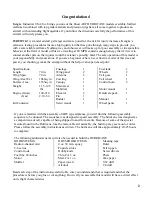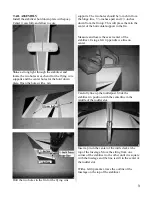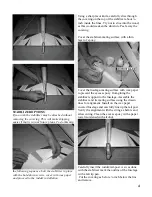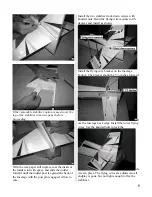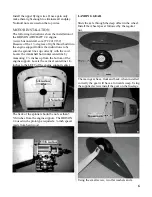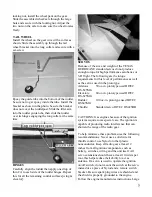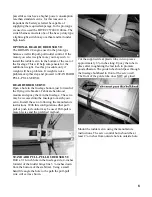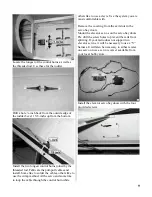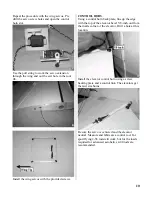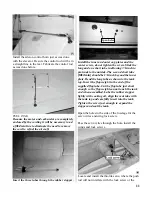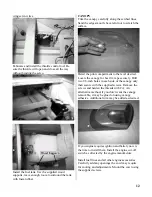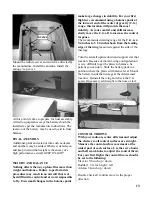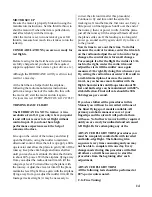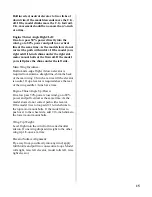
locking nut, install the wheel pant on the gear.
Slide the assembled wheel/axle through the large
hole and secure with the locking nut. Adjust the
two nuts on the axle to make sure the wheel rotates
freely.
TAIL WHEEL
Install the wheel on the gear wire with a collar as
shown. Slide the assembly up through the tail
wheel bracket into the long collar and secure with a
set-screw.
Epoxy the guide tube into the bottom of the rudder,
be sure not to get epoxy inside the tube. Install the
bracket as shown in the photo, be sure the bracket
does not cover the rudderpost. Slide the tiller arm
into the rudder guide tube, then slide the rudder
over its hinges engaging the long collar at the same
time.
HINGES
Carefully align the rudder then apply one drop of
thin CA to each side of the rudder hinges. Repeat
this for all the remaining control surfaces [wing &
elevator].
SERVOS
Because of the size and weight of the TEXAS
HURRICANE standard servos do not produce
enough torque for high performance aerobatics or
3-D flight. The following are the torque
requirements for this level of performance as well
as the servos used in the prototype.
Ailerons:
50 oz-in. prototype used HITEC
HS-625MG
Elevators:
60 oz-in. prototype used HITEC
HS-625MG
Rudder:
100 oz-in. prototype used HITEC
HS645MG
Throttle:
Standard servo HITEC HS425BB
CAUTIONS: Gas engines because of the ignition
systems require some special care. The ignition is
capable of producing radio interference that can
shorten the range of the radio gear.
To help minimize these problems use the following
recommendations: Never use a solid wire for
throttle control, use Nyrod or other plastic
nonconductor. Keep all radio gear at least 12
inches from all ignition components, such as
battery, switches, wiring and the unit itself. All
servo extensions should have at least 10 twists per
foot, this helps reduce their ability to act as
antenna. If a servo is used to operate the ignition
on/off switch, do not mount the switch at the servo,
instead use a piece of Nyrod and a remote switch
bracket. Be sure spark plug wires are shielded and
the shield is properly grounded to the engine.
Follow the engine manufactures instructions. Large
7


